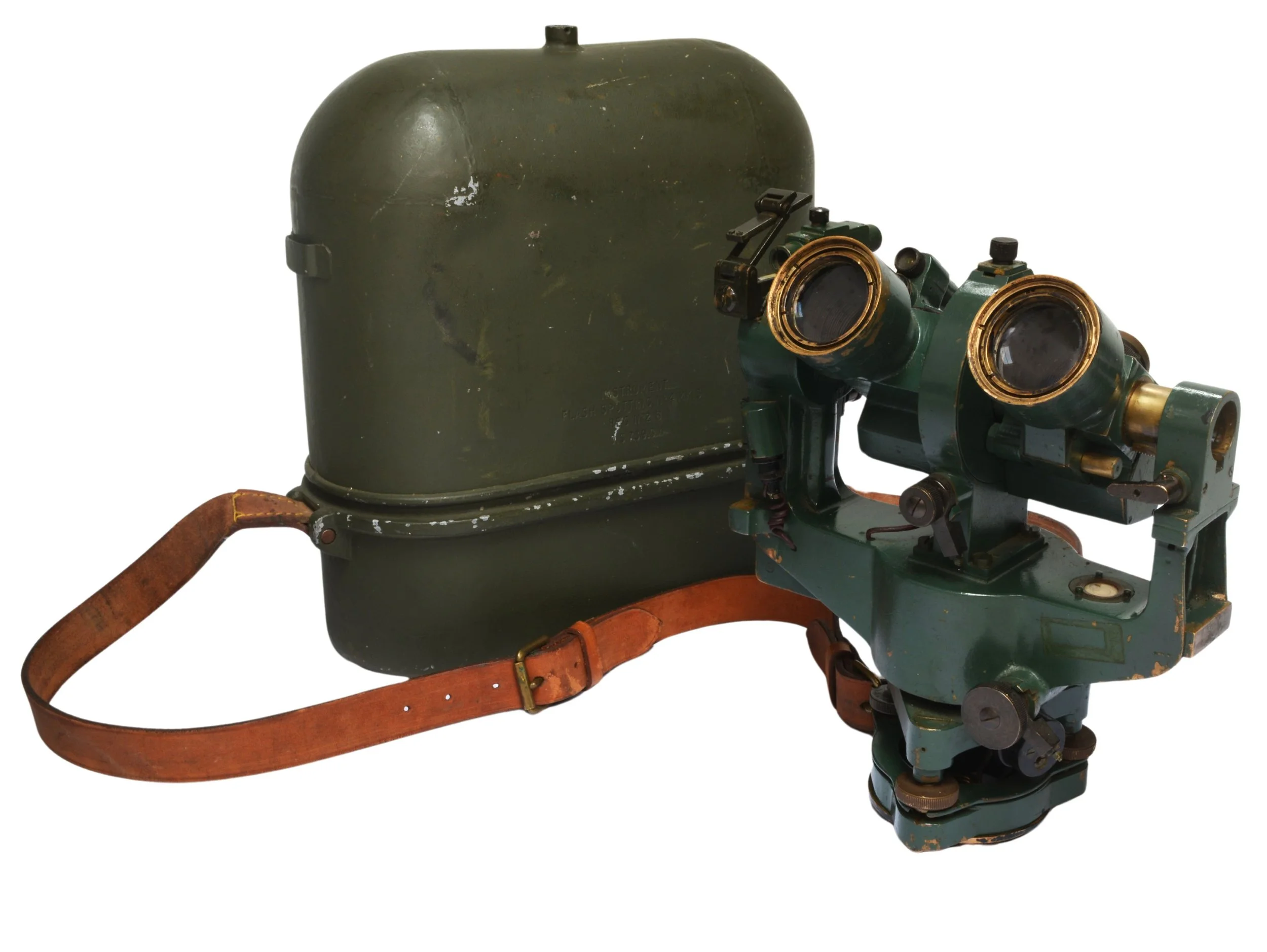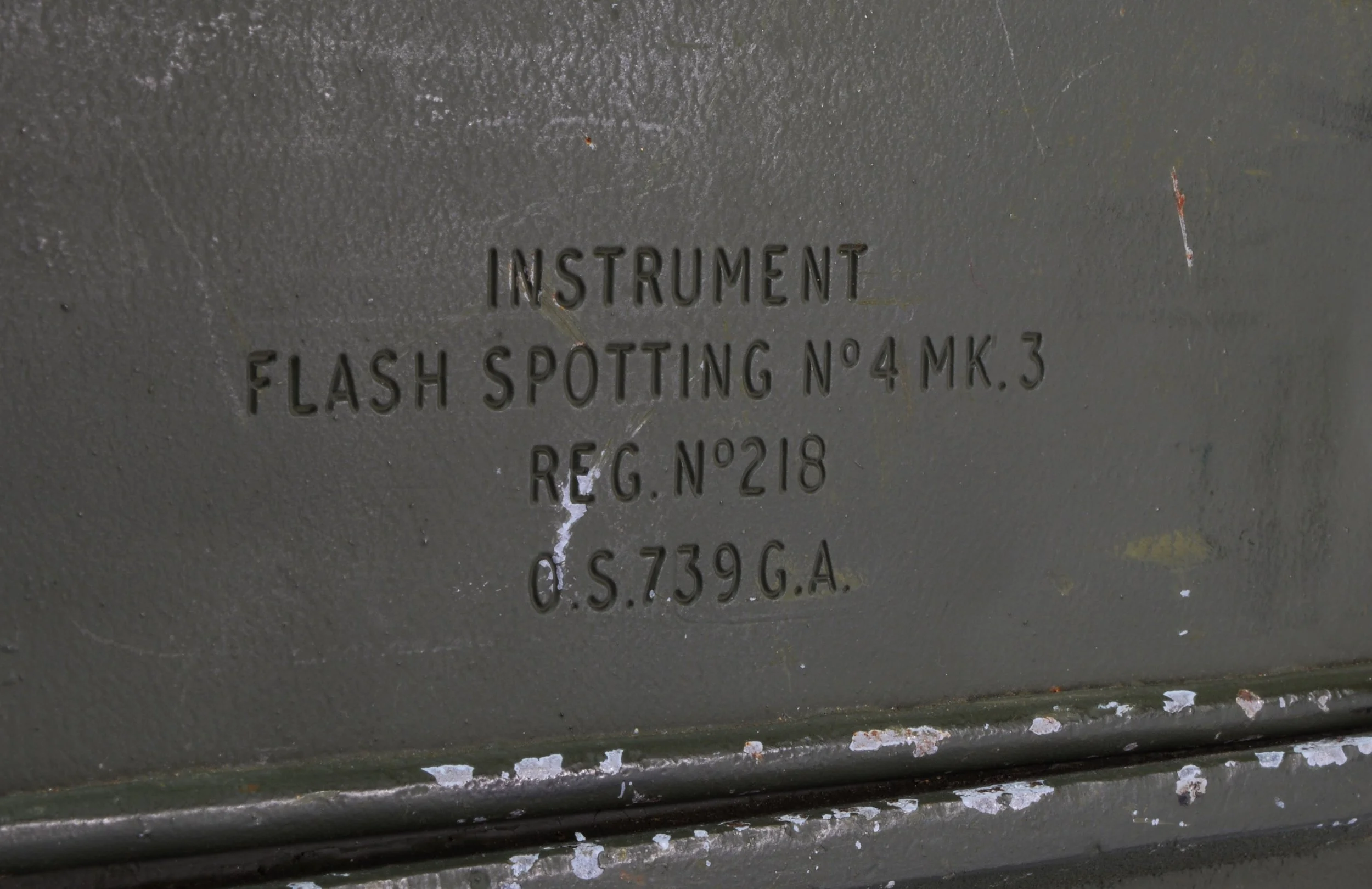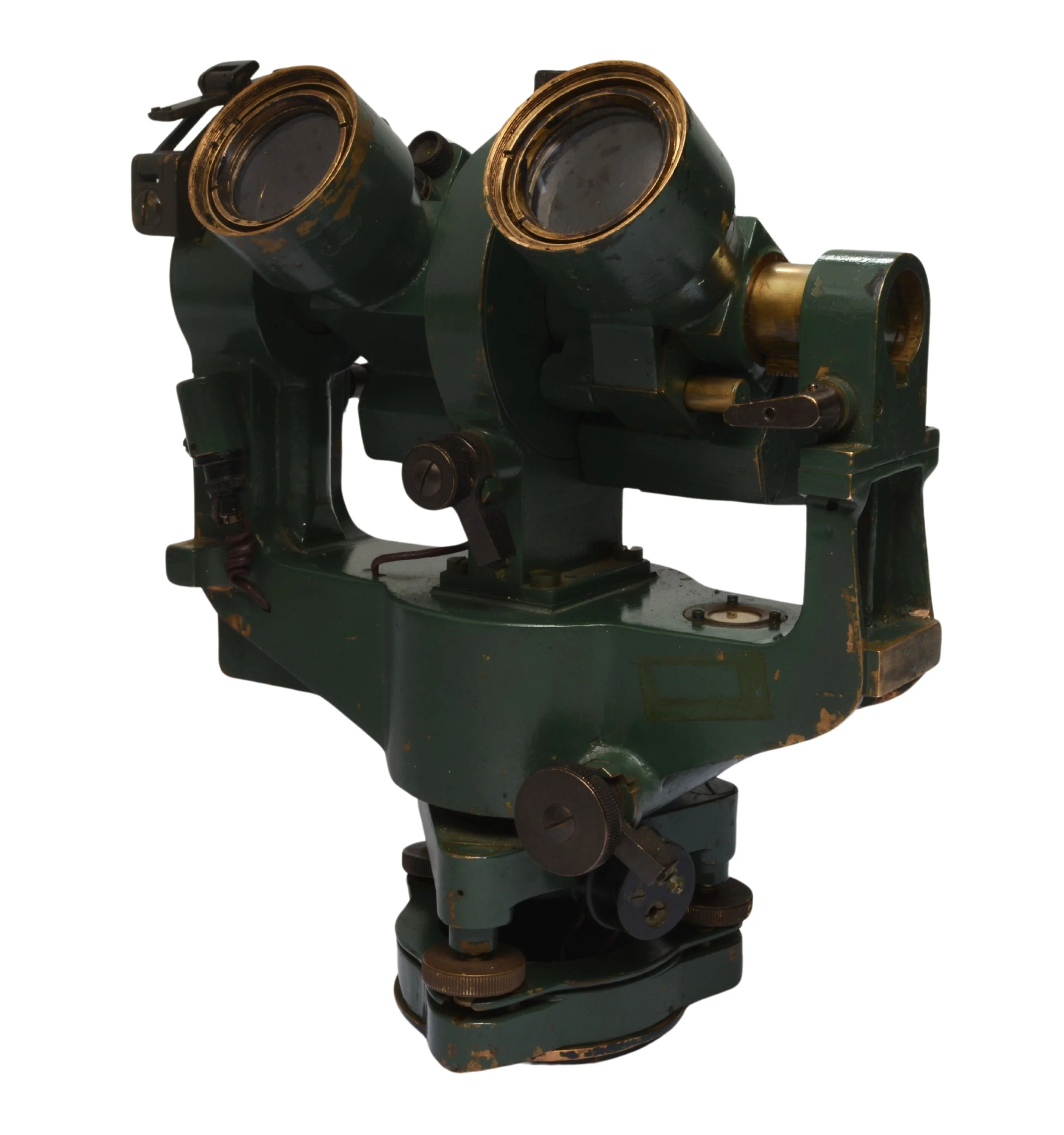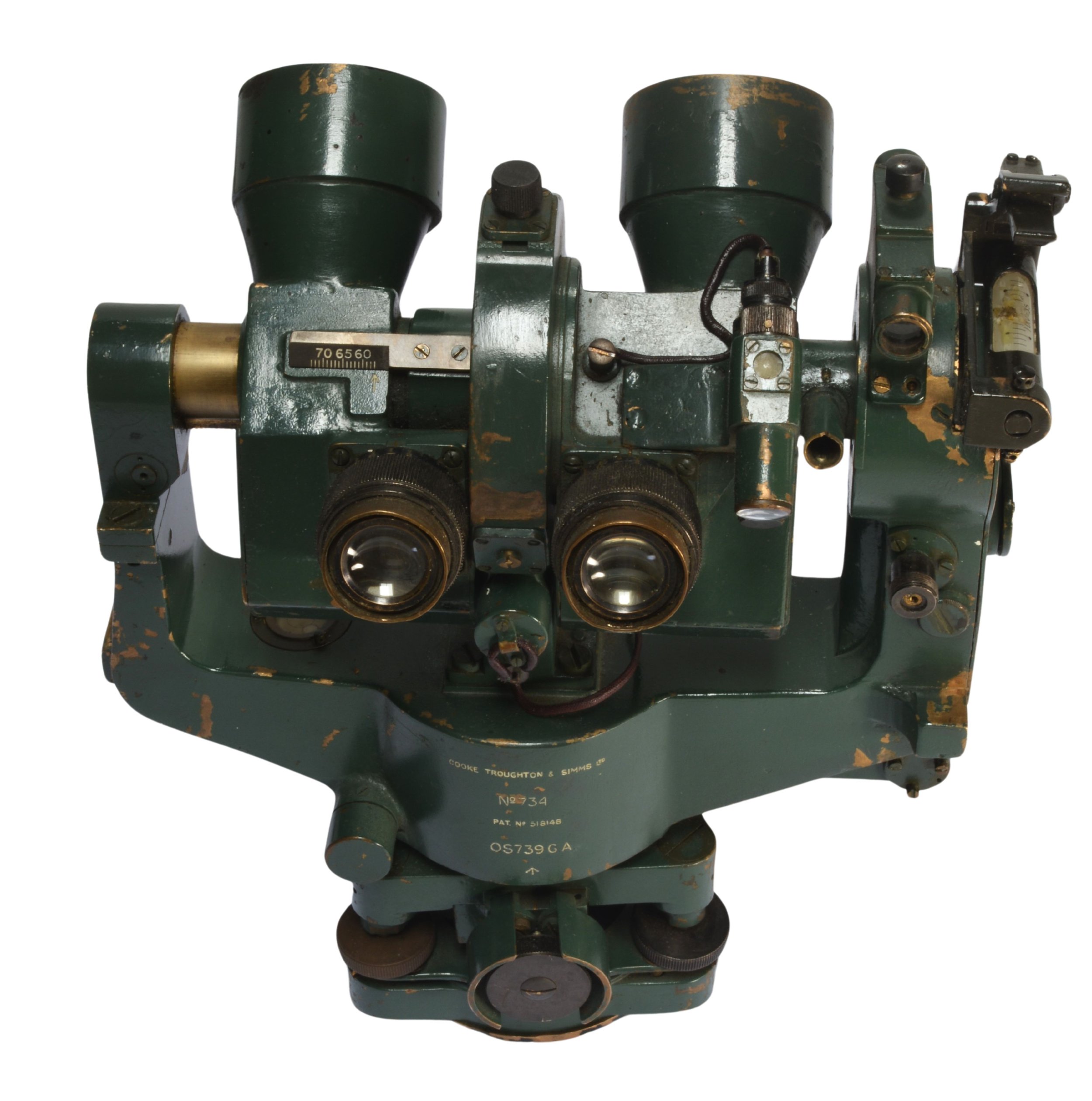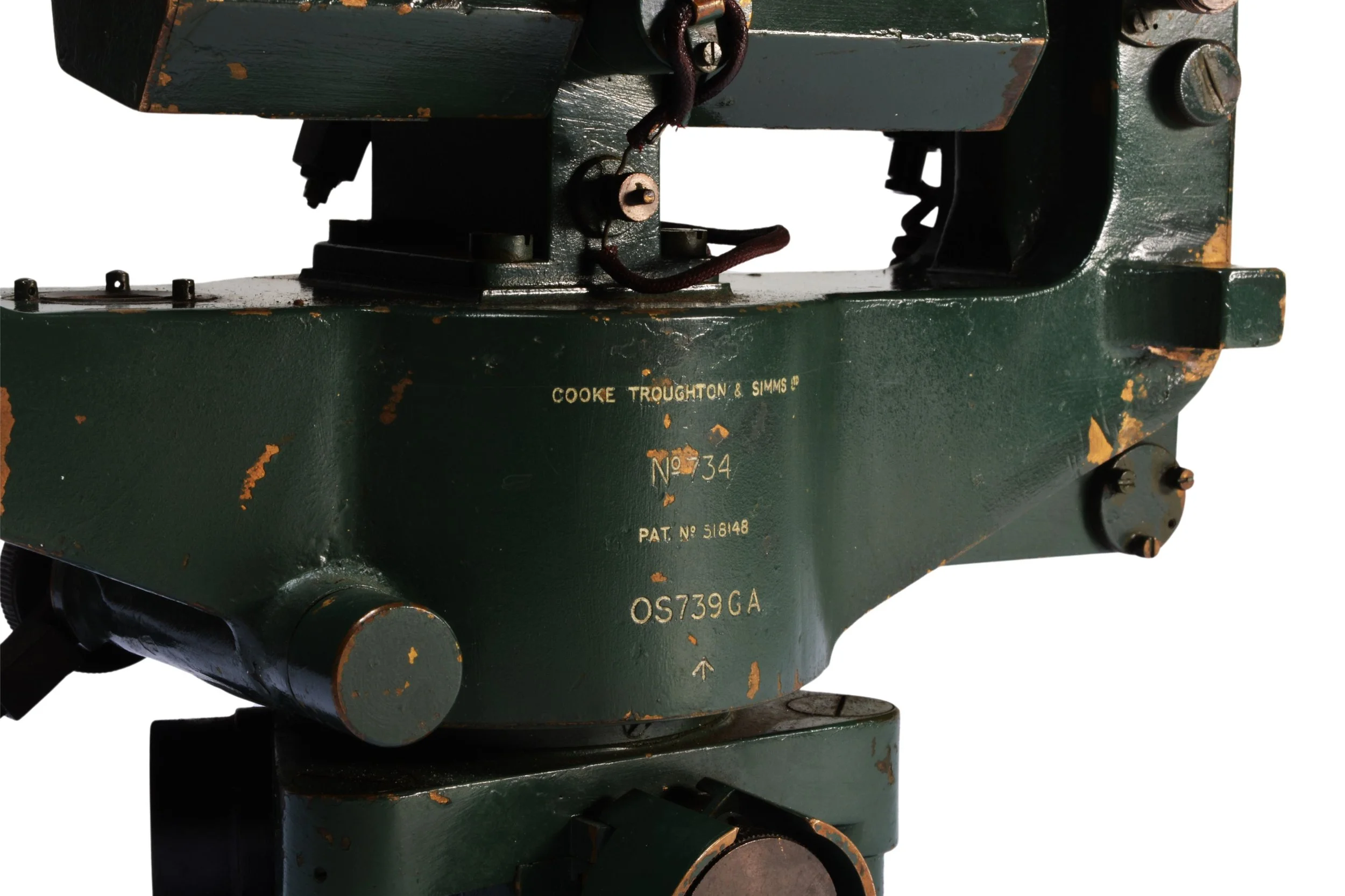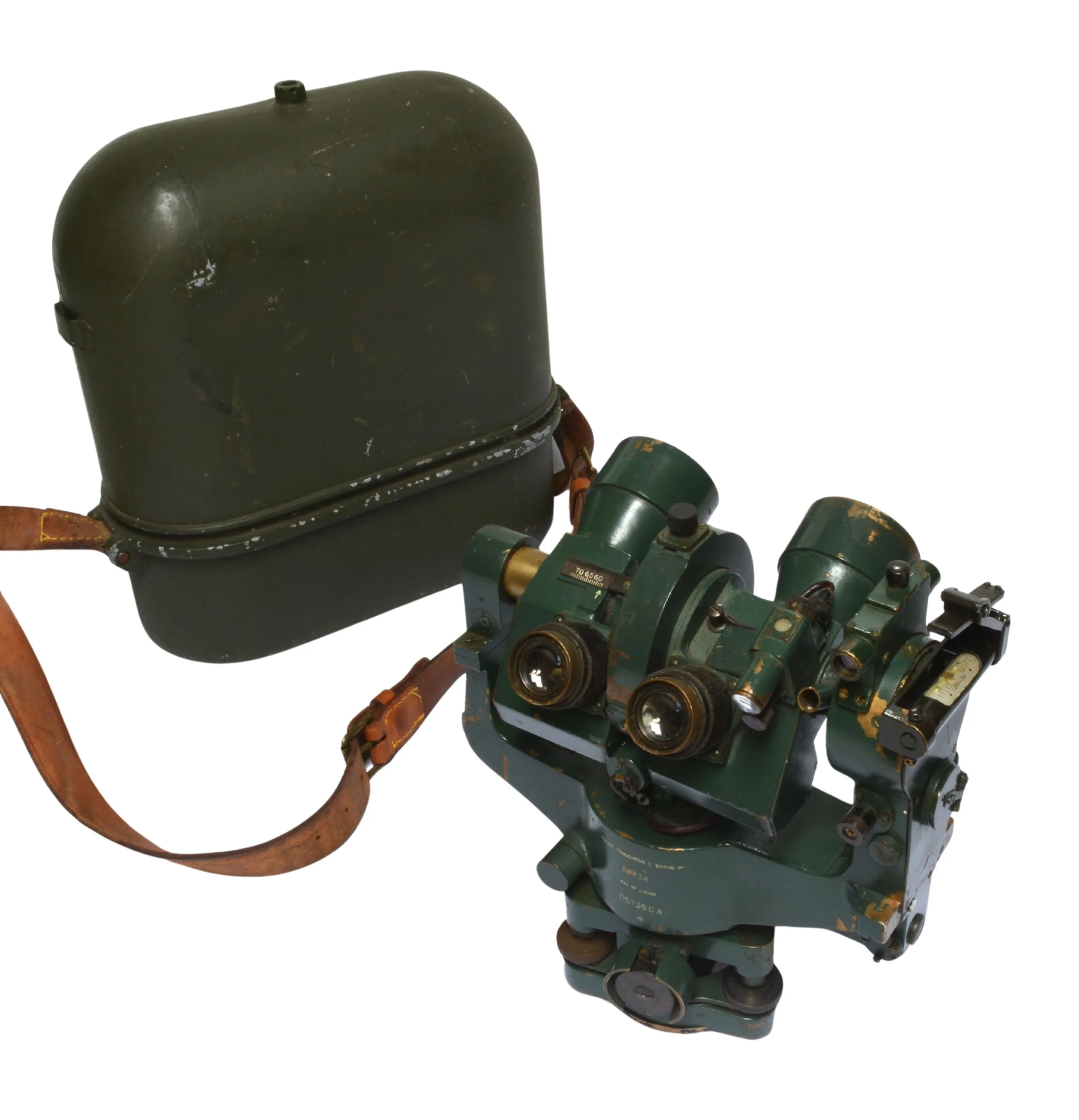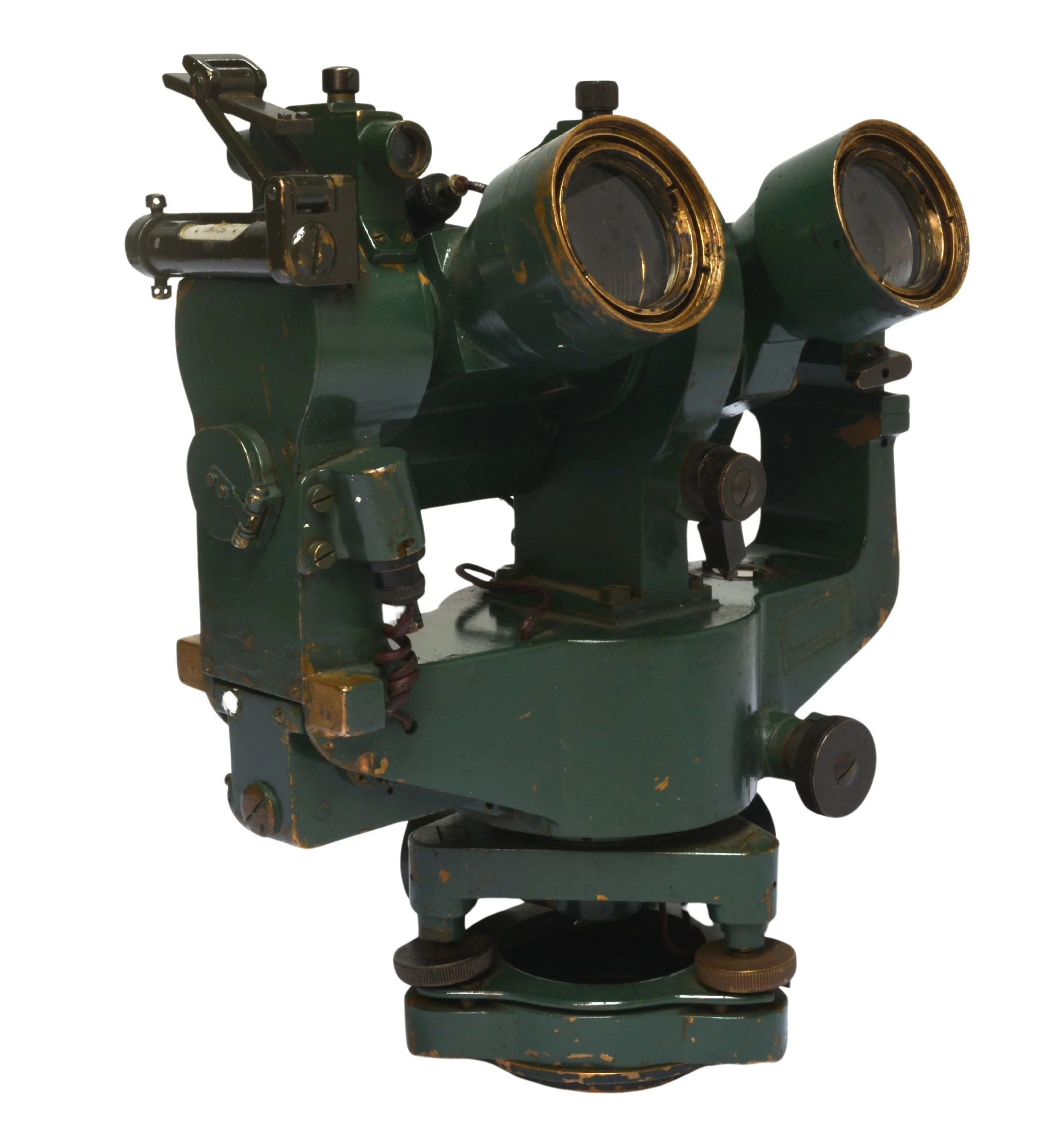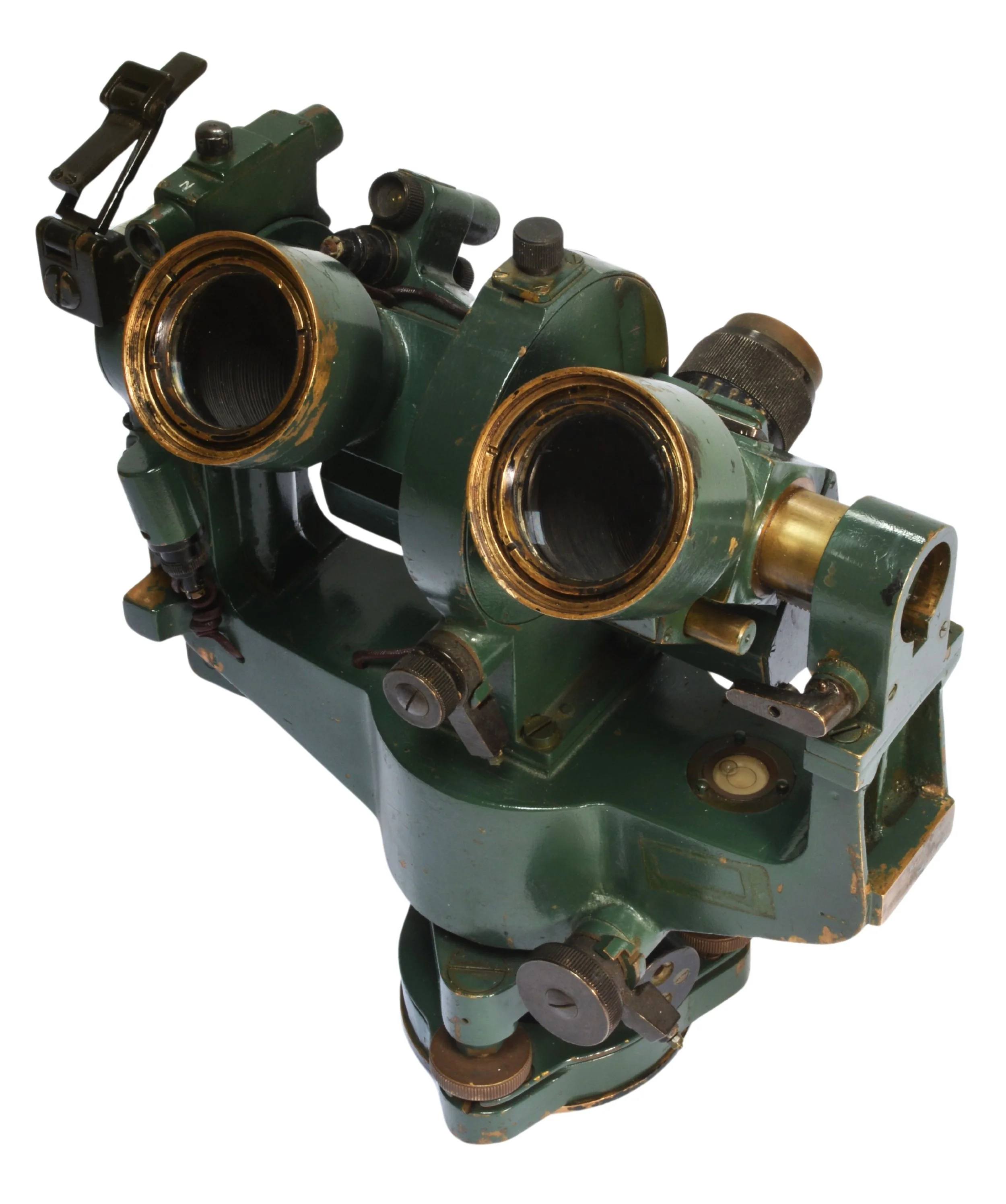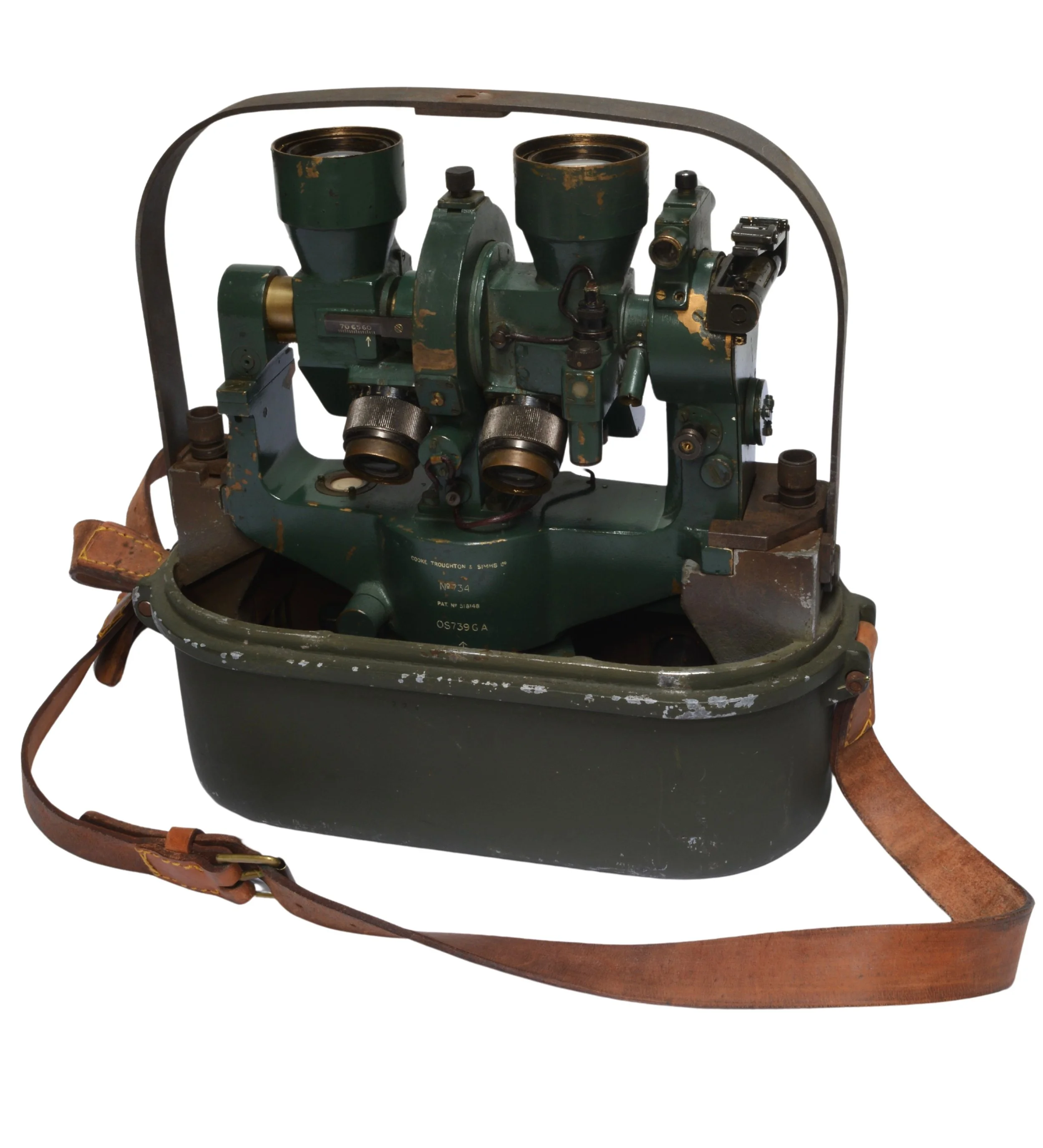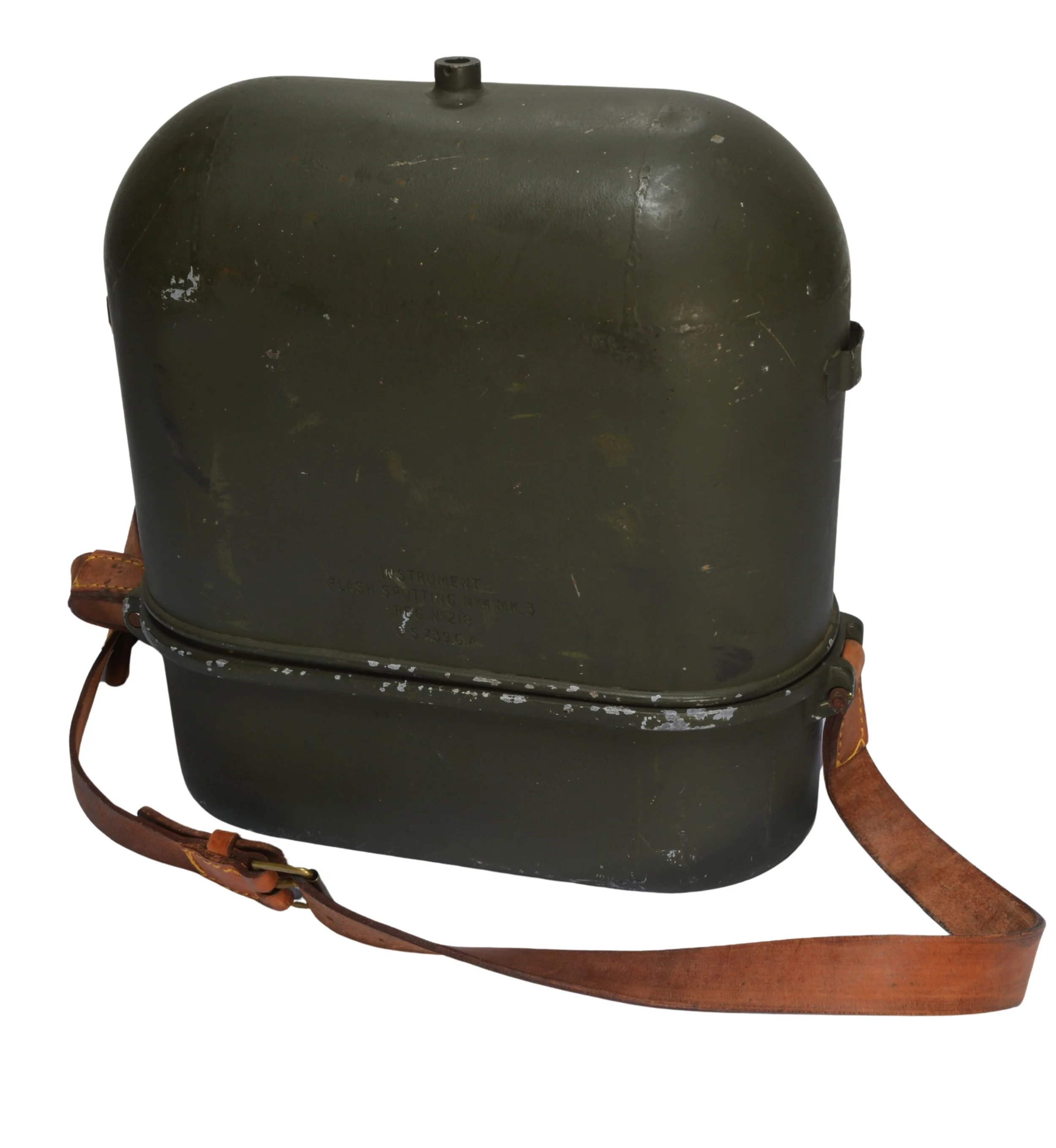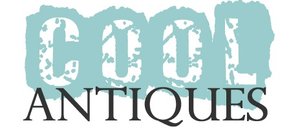
WW2 Flash Spotting Binocular Telescope
A rare World War 2 era binocular flash spotting telescope by Cooke, Troughton and Simms of York. These instruments were used to detect the position of enemy guns at long range where - because of the distances involved - direct observation was impossible. Instead, flashes of light from enemy guns were observed as the explosions reflected in the night sky. When several observers were deployed, the exact location of the enemy targets could be determined through the process of triangulation. This rare instrument makes for a fabulous display piece, and thanks to its bright and pin-sharp optics can be used just like a normal telescope.
The transit case is engraved 'Instrument Flash Spotting No4 Mk 3, Reg 218, O.S.739GA' and the instrument itself is marked 'Cooke Troughton and Simms Ltd, No734, Pat No 518148, O.S.739GA', alongside the British military Broad Arrow ('Crow's Foot') mark. The instrument would originally have been affixed to a tripod (not supplied), with the thumbscrews to the tribrach base being adjusted to ensure that the two spirit levels were perfectly level. The separation of the twin eyepieces could then be adjusted by means of a lever to the front and each eyepiece turned to achieve precise focusing adjustment. The elevation and orientation would be set using the thumbscrews to front, each being equipped with a locking lever. Precise alignment was aided by means of a graticule fitted to the right eyepiece, which still survives in perfect condition. Various sights to the right hand side (untested, but similar in appearance to those fitted to a conventional theodolite) were presumably used for reading the vertical and horizontal angles. One of these is fitted with electrical illumination. While the instrument retains its original paintwork, it is of all-brass construction and could be stripped and polished to considerable effect.
Height 29cm (11½") and width 24cm (9½"), excluding the case. It is a solidly engineered piece weighing in at a hefty 10kg (22lbs).
Condition: The optics are reasonably clear with some localised fungus to the front optics and some dust spots on the prisms, and also a slight knock to the rim of the eyepieces. The instrument focuses as it should and gives a bright, crisp image. It provides an upright (rather than inverted) image. The graticule is fully intact. The instrument retains its original paint with some scuffs and losses consistent with age and use. The electrics and various sights to the right hand side are untested and possibly incomplete. Both spirit levels are intact, the uppermost one with surface imperfections. The lid of the transit case is a tight fit and is missing its lock screw. The leather strap is in good order.

